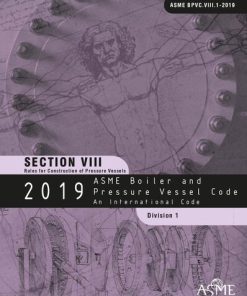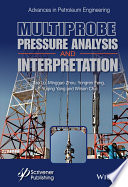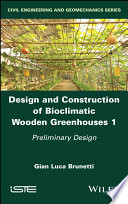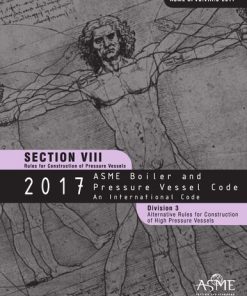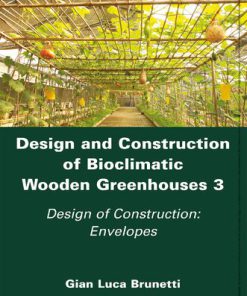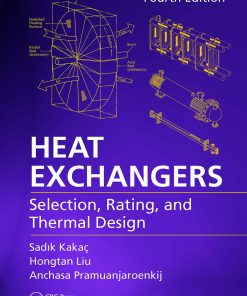Surface Production Operations Volume 5 Pressure Vessels Heat Exchangers and Aboveground Storage Tanks Design Construction Inspection and Testing 1st Edition by Maurice Stewart 0128037229 9780128037225
$50.00 Original price was: $50.00.$25.00Current price is: $25.00.
Surface Production Operations Volume 5 Pressure Vessels Heat Exchangers and Aboveground Storage Tanks Design Construction Inspection and Testing 1st Edition by Maurice Stewart – Ebook PDF Instant Download/Delivery: 0128037229, 9780128037225
Full download Surface Production Operations Volume 5 Pressure Vessels Heat Exchangers and Aboveground Storage Tanks Design Construction Inspection and Testing 1st Edition after payment
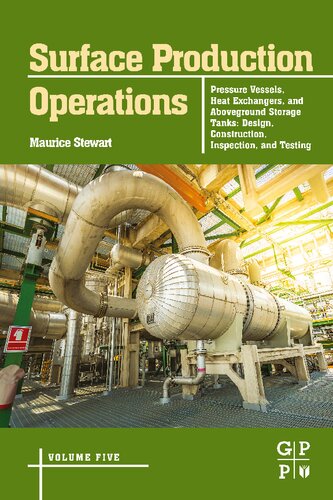
Product details:
ISBN 10: 0128037229
ISBN 13: 9780128037225
Author: Maurice Stewart
Covering both upstream and downstream oil and gas facilities, Surface Production Operations: Volume 5: Pressure Vessels, Heat Exchangers, and Aboveground Storage Tanks delivers a must-have reference guide to maximize efficiency, increase performance, prevent failures, and reduce costs. Every engineer and equipment manager in oil and gas must have complete knowledge of the systems and equipment involved for each project and facility, especially the checklist to keep up with maintenance and inspection–a topic just as critical as design and performance. Taking the guesswork out of searching through a variety of generalized standards and codes, Surface Production Operations: Volume 5: Pressure Vessels, Heat Exchangers, and Aboveground Storage Tanks furnishes all the critical regulatory information needed for oil and gas specific projects, saving time and money on maintaining the lifecycle of mechanical integrity of the oil and gas facility. Including troubleshooting techniques, calculations with examples, and several significant illustrations, this critical volume within the Surface Production Operations series is crucial on every oil and gas engineer’s bookshelf to solve day-to-day problems with common sense solutions.
- Provides practical checklists and case studies for selection, installation, and maintenance on pressure vessels, heat transfer equipment, and storage tanks for all types of oil and gas facilities
- Explains restoration techniques with detailed inspection and testing procedures, ensuring the equipment is revitalized to maximum life extension
- Supplies comprehensive coverage on oil and gas specific American and European standards, codes and recommended practices, saving the engineer time searching for various publications
Surface Production Operations Volume 5 Pressure Vessels Heat Exchangers and Aboveground Storage Tanks Design Construction Inspection and Testing 1st Table of contents:
1: Engineering principles
Abstract
1.1: General overview
1.2: Basic principles
1.3: Stress analysis
1.4: Discontinuity stresses
1.5: Fatigue analysis
1.6: Thermal stresses
2: History and organization of codes
Abstract
2.1: Overview and objectives
2.2: Pressure vessels and equipment
2.3: History of pressure vessel codes in the United States
2.4: Organization of the ASME Boiler and Pressure Vessel Code
2.5: Organization of Code Committee
2.6: Updating and interpreting the Code
2.7: ASME Code stamps
2.8: Organization of the ASME B31 Code for pressure piping
2.9: Some other pressure vessel codes and standards in the United States
2.10: Worldwide pressure vessel codes
2.11: ASME Code, Section VIII, Division 1 versus Division 2
2.12: Design criteria, ASME Code, Section VIII, Division 1
2.13: Design criteria, ASME Code, Section VIII, Division 2
2.14: ASME Code, Section IX: Welding
2.15: ASME Code, Section I, Power boilers
2.16: Additional requirements employed by users in critical service
3: Materials of construction
Abstract
3.1: Overview
3.2: Material selection
3.3: Nonferrous alloys
3.4: Ferrous alloys
3.5: Heat treatment of steels
3.6: Brittle factors
3.7: Hydrogen embrittlement
4: Materials selection for pressure vessels
Abstract
4.1: Overview
4.2: Selection of materials for service conditions
4.3: Selection of materials to prevent brittle fracture
4.4: Guidelines for preventing brittle fracture in existing equipment
5: Mechanical design of pressure vessels
Abstract
5.1: Overview and objectives
5.2: General considerations
5.3: Owner’s, user’s, and manufacturer’s responsibilities
5.4: Determining design conditions
5.5: Mechanical design
6: Fabrication, welding, and in-shop inspection
Abstract
6.1: Overview
6.2: Plate materials
6.3: Forming of shell and head components
6.4: Nozzles
6.5: Fabrication welds
6.6: Welding processes and procedures
6.7: In-shop inspection
7: In-service inspection by nondestructive examination (NDE)
Abstract
7.1: Overview
7.2: General considerations
7.3: Design for inspection
7.4: Code and jurisdiction requirements
7.5: Forms of deterioration
7.6: Analysis of in-service inspection data
7.7: Fitness-for-service analysis
7.8: Nondestructive examination techniques
8: Repair, alteration, and re-rating
Abstract
8.1: Overview
8.2: Code and jurisdiction requirements
8.3: Repairs
8.4: Alteration
8.5: Re-rating
9: Heat transfer theory
Abstract
9.1: Overview
9.2: Objectives
9.3: What is a heat exchanger?
9.4: Fouling
9.5: Process specification
9.6: Information needed for specifying work
9.7: Deliverables from the supplier
9.8: Evaluating designs
9.9: Economic pressure drop and velocity
9.10: Basic heat transfer theory
10: Heat exchanger configurations
Abstract
10.1: Overview
10.2: Shell-and-tube exchangers
10.3: Double pipe exchangers
10.4: Plate-fin exchangers
10.5: Plate-and-frame exchangers
10.6: Indirect-fired heaters
10.7: Direct-fired heaters
10.8: Air-cooled exchangers
10.9: Cooling towers
10.10: Other types of heat exchangers
10.11: Heat exchanger selection guidelines
11: Tubular heat exchanger inspection, maintenance, and repair
Abstract
11.1: Overview
11.2: Asian, European, and North American Nondestructive Testing Societies and related organizations
11.3: Evaluating and inspecting heat exchangers
11.4: Tubular exchanger inspections
11.5: Most likely locations of corrosion
11.6: Shop work
11.7: Shop inspection
11.8: Nondestruction examination
11.9: Minor repairs
11.10: Major repairs
11.11: Hydrostatic leak testing
11.12: Hydrostatic leak testing
11.13: Baffles and tube sheets
11.14: Heat exchanger bundle removal
11.15: Bundle removal procedures
11.16: Tube bundle removal
11.17: Shell repair
11.18: Heat treatment
11.19: Double-pipe exchangers
11.20: Inspection and repair of exchanger parts
11.21: Exchanger alteration
11.22: Quality control inspections
12: Heat exchanger materials considerations
Abstract
12.1: Component materials
12.2: Minimum pressurizing temperature
12.3: Sacrificial anodes
12.4: Insulation
13: Above ground storage tanks
Abstract
13.1: Objectives
13.2: Functions of an oil terminal
13.3: Storage tanks
13.4: Other storage facilities
13.5: Measurements of above ground storage tanks
13.6: Samples (Refer to Fig. 13.78)
13.7: Common tank problems and possible solutions
14: Selection of tank materials
Abstract
14.1: Overview
14.2: Selection of materials for service conditions
14.3: Typical tank materials considerations
15: Tank design
Abstract
15.1: Objectives
15.2: General design considerations
15.3: Basic data
15.4: Tank sizing
15.5: Safe oil height (SOH) and LPO determination
15.6: Bottom design
15.7: Shell design
15.8: Seismic and wind design
15.9: Roof design
16: Foundations
Abstract
16.1: Objectives
16.2: Soil considerations
16.3: Foundation design and secondary containment
17: Fabrication and construction
Abstract
17.1: General considerations
17.2: Foundation
17.3: Site construction
17.4: Erection considerations
17.5: Bottom construction
17.6: Shell construction
17.7: Roof considerations
17.8: Site construction
17.9: Erection sequence
17.10: General considerations
18: Inspection and testing
Abstract
18.1: Inspection philosophy
18.2: Inspection frequency
18.3: Inspection and testing techniques
18.4: Records
18.5: Tank inspection checklists
19: Fire protection
Abstract
19.1: General considerations
19.2: Common causes of fires
19.3: Design considerations for fire fighting
19.4: Location and spacing
19.5: Drainage and impounding
19.6: Fire suppression systems
19.7: Design requirements
20: Maintenance and repairs
Abstract
20.1: General considerations
20.2: Out-of-service replacement or repairs
20.3: In-service repairs
20.4: Specific considerations
Appendix A: Design calculations for an aboveground welded steel storage tank
A.1: Aboveground welded steel storage tank design
Appendix B: Design of a concrete ringwall foundation
B.1: Concrete ringwall foundation design example
Appendix C: Design of a crushed stone (gravel) ringwall foundation
C.1: Crushed stone ringwall foundation design
Appendix D: Design of a pile supported concrete slab foundation
D.1: Pile-supported concrete slab design
People also search for Surface Production Operations Volume 5 Pressure Vessels Heat Exchangers and Aboveground Storage Tanks Design Construction Inspection and Testing 1st:
8 surface cleaner
surface pressure equation
surface production operations volume 2 pdf
product of volume and pressure
Tags:
Maurice Stewart,Surface,Production,Operations
You may also like…
Technique - Regulatory Literature
Technique - Electronics
Engineering - Civil & Structural Engineering
Technique - Regulatory Literature
Technique - Regulatory Literature
Engineering - Civil & Structural Engineering
Housekeeping & Leisure - Interior Design & Decoration
Heat Exchangers: Selection, Rating, and Thermal Design 4th Edition Sadik Kakaç



